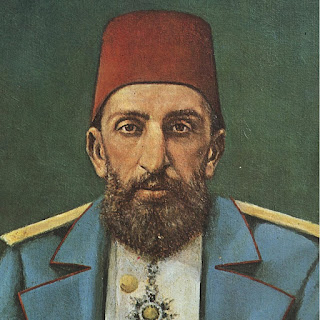Sultan Abdul Hamid II
was the 34th Ottoman Sultan and the last to hold effective power over the
Ottoman Empire. He ruled from 1876 to 1909, a period of significant change and
modernization for the empire.
Abdul Hamid II was
born on September 21, 1842 in the Topkapi Palace in Istanbul, Turkey. He was
the son of Sultan Abdulmejid I the son of Sultan
Abdulmejid I. He was well-educated and fluent in several languages, including
Turkish, Arabic, Persian, and French. Abdul Hamid was married at least once, and possibly more than once. His first wife was Tirimüjgan Kadın, a Georgian princess. They had one son together, Şehzade Yusuf Izzeddin.
In 1876, Abdul Hamid
became sultan following the deposition of his brother, Murad V. He faced
numerous challenges during his reign, including internal unrest, external
threats, and financial difficulties. In response, Abdul Hamid implemented a
series of reforms aimed at modernizing and strengthening the empire.
One of Abdul Hamid's major initiatives was the establishment of a network of schools and universities throughout the empire, with the goal of providing education to more of the population. He also made efforts to improve infrastructure, including the construction of new roads, railways, and telegraph lines.
However, Abdul Hamid's efforts to modernize the empire were often overshadowed by his authoritarian rule. He imposed strict censorship, suppressed political opposition, and used his secret police to crack down on dissent. As a result, he became increasingly unpopular with many of his subjects, and his reign was marked by widespread unrest and resistance.
Abdul Hamid died in Constantinople (now Istanbul) in 1918, at the age of 76. His death marked the end of an era in the Ottoman Empire, and the beginning of a period of political and social transformation. Despite his controversial rule, Abdul Hamid is remembered as a significant figure in Ottoman history, and his legacy continues to be debated by historians and political analysts.




.jpg)


No comments:
Post a Comment